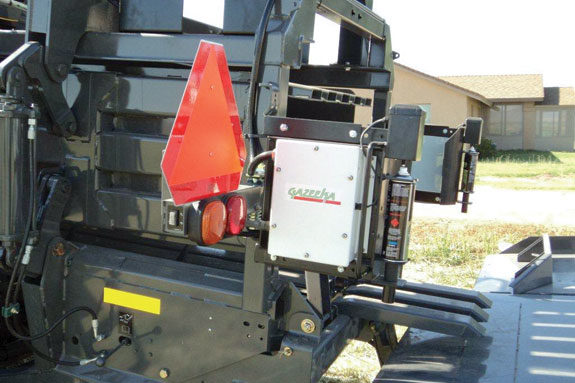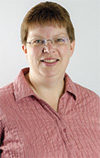As any hay producer knows, moisture levels in baled hay are critical to putting up a high- quality product. Most current moisture-reading technology on the market today is based on electric conductivity, but readings can be somewhat variable depending on the compaction of the bale and stem size of the forage.
(This can especially be a problem with first-cutting and second-cutting hay.)
There is now a more accurate way to test your hay, and it can be done right in the field. The Gazeeka 870 Moisture Meter was invented by an Australian engineer who adapted the technology from the mining and cotton industries.
The units are in their sixth season in Australia, but the first units in the U.S. were tested in the field in 2008, and a limited number were sold in 2010.
It is now ready for full release into the U.S. market and will be marketed through hay equipment dealers in 2011.
Keith Phillips, who grows 700 acres of alfalfa near Kahoka, Missouri, believes this technology is the most accurate way he can find bales with wet spots that need to go into the drying shed. He states, “We take two trailers into the field to pick up bales.
The painted bales go on one trailer and the unmarked bales go on another. The marking system allows us to segregate the bales with the damp spots.”
Unlike other moisture-measuring systems that estimate moisture using conductivity, this meter measures a much larger segment of the bale, including stem moisture.
For use on big square balers, the meter is based on microwave technology, the first of its kind in North America.
Two boxes, a send unit and a receive unit, mount on the back of the bale chute. Microwaves are sent through the center of the bale 50 times per second, and the meter measures molecules of moisture, accurate to within 0.5 percent of oven-dried lab samples.
There’s a control panel in the tractor which reads in five-second intervals and also shows a peak moisture and average moisture reading.
The operator can choose a percentage of moisture they are comfortable with, and when the meter registers anything over that amount, the bale will be marked with a red dye, identifying not only the bale but the exact spot in the bale where the moisture levels are too high.
At the same time, an alarm sounds to tell the operator he has a wet bale. That bale can then be separated so it won’t be sent to a client or stacked in a shed with dry hay.
Scott Wolle of O.K. Enterprises, located in southwest Minnesota, installed a meter two years ago.
They grow several hundred acres of alfalfa and sell their best hay to dairy producers in the Midwest. He has been pleased with the results he has seen using this new product and says, “The Gazeeka is much more accurate than anything we used before.
I set the sprayer to mark the bales at 22 percent moisture, and if a bale has more than one paint dot, we feed it to the beef cattle. All other hay is stacked in our hay barn for dairies.”
For more information about the Gazeeka 870 Moisture Meter, download a product brochure at http://bit.ly/Gazeeka or contact International Stock Food, the North American distributors, by calling 800-497-4243. FG
PHOTO
Two boxes, a send unit and a receive unit, mount on the back of the bale chute. Microwaves are sent through the center of the bale to measure moisture content. Photo courtesy of International Stock Food.










